- Home
- Darrell Maloney
Everything Has Changed Page 14
Everything Has Changed Read online
Page 14
Guardsmen drove loads by the tens of thousands from Knoxville and Philadelphia and Wheeling and shoved the ash into abandoned coal mines.
The product which came out of the mines before they played out was dirty and black.
The waste which went back in was dirty and gray, and while it didn’t pack as tightly as the coal, the mines held a heck of a lot.
Some ideas were nonsensical.
An on-line petition to bury the White House and the U.S. Capitol Building in mountains of ash managed to get almost a million signatures.
Over a hundred thousand of those signatories volunteered to go help in the effort. How many would have actually shown up with shovels in hand will never be known, for FEMA passed on the initiative.
It was widely believed the petition was created out of frustration, for approval ratings for every politician in Washington were at an all-time low.
For years every single politician running for office promised to “drain the swamp,” and those elected just stocked it with bigger alligators. Popular belief was that the nation could have been much better prepared for Yellowstone and its aftermath if elected officials were more worried about doing their jobs instead of getting reelected.
Just for the record, a second on-line petition which called for the public hanging of “every Washington politician of either party” got almost as many signatures.
And twice as many volunteers to help.
One of the most creative ideas to come out of the disaster was the creation of “ashcrete.”
Concrete can consist of a number of things including limestone, sand, slag, gravel and crushed rock. Mixed together, the binding materials and the aggregate form a sturdy foundation for roads, buildings and bridges and last for many years.
In an average year almost two billion tons are poured in the United States.
Someone made a simple suggestion: why not mix some of the ash in the concrete? It’s every bit as filling as ground shale or slate. It’s readily available, and such a mixture would go a long way in helping get rid of the ash.
Congress did what it does best, and within days a half-assed bill was written mandating that all concrete made in America consist of ten percent volcanic ash.
The bill passed by unanimous vote and every congressman in Washington patted themselves on the back and announced loudly and often that they’d saved the country.
Their constituents were amazed that they’d actually done something.
It would be years before anyone realized the enormity of their blunder, as the poisons contained in the ash started leeching into homes and office buildings and sickening those inside.
The problem would be to the second half of the 21st century what asbestos was to the second half of the 20th.
Of course by then all the congressmen who rushed the bill through would be dead.
And that, in beltway logic, made it okay.
Of course the most logical place to ship the ash was the big smoking hole which took out very large parts of Montana, Wyoming and Idaho.
Open top rail cars once used to transport coal around the country were gathered up and filled with ash, awaiting the okay to begin shuttling it to the crater the blast left behind.
They were sitting on sidings all over the country.
The holdup, as is often the case, was the federal government.
This time, though, as is almost never the case, their hesitance made sense.
“Before we start sending our people into harm’s way and start filling that crater back up, we want to make damned sure it’s not gonna blow again,” said the Secretary of the Interior, who ran the park.
Or what was left of it.
“We’ve lost too many people already. Even as we speak, our best and brightest scientists are studying the site. As soon as they determine there’s no chance of a second eruption within the next hundred years, we’ll start the refill process.”
Every scientist who heard the speech laughed out loud at the secretary’s words.
There’s no such thing as a “no chance” guarantee when one is dealing with volcanoes.
Chapter 41
It was a bright and early Monday morning at Etlunka Lake.
The sun was just peeking over the horizon. That meant Sid was already out and about, for he always headed to the first drop site in the hours of darkness.
It was, therefore, safe for the participants in Sid Smith’s birthday surprise to show their faces at his home site, without having to worry they’d give away their secret.
As promised, the six lumberjacks were first on the scene.
As non-residents, they were housed together in a long bunkhouse at the north end of the lake. They had reliable transportation in the form of three F-250 pickup trucks.
And they were big believers in the early bird getting the worm.
Their day would be a bit different than their normal routine.
Usually they went from site to site and cut down a few trees for each one.
They showed each new resident how to notch the logs, expressing the importance of measuring accurately.
“Carpenters have a rule which serves them well: measure twice, cut once. It prevents a lot of mistakes. And any log you notch in the wrong place won’t fit. You’ll have to cut it up for firewood and wait for a replacement.”
On “Project Sid,” as the group was calling the build, they would cut down all the logs at one time. Then they’d notch them themselves while volunteers were placing them.
The men with the strongest backs were assigned to place the logs. No sissies need apply, for the logs weighed in excess of four hundred pounds apiece.
While the tree-cutting, notching and log stacking were all going on in tandem, other workers were working on other parts of the project.
Three men were assembling the outhouse, while another dug the hole it would sit over.
Two other men dug the trenches for the pipe which would stretch from the shared well and into Sid’s kitchen.
Four men were assigned to do the concrete work, but couldn’t pour the stuff until the walls were assembled. Once the basic structure was up they’d pour the mix inside the cabin and tack “DO NOT ENTER” tape across each doorway until it dried.
In the meantime, they were mixing and applying mortar at the log joints and in the gaps between the logs.
Most of the men never took a break, choosing to eat their lunch on the run.
They wanted to get as much done as they could, so Sid would be impressed as he drove up on them and saw what they’d done.
Only Sid would not drive up on them on this particular day.
Sid’s RV, his temporary home, was on the front third of his property.
Many hours later he pulled up, well past dark, exhausted and glassy-eyed from a long day’s work.
And he didn’t even notice the partially-built cabin seventy yards away in pitch blackness.
The workers all went home at dusk, lest they be caught red-handed.
They didn’t get the walls done, as they’d hoped to do.
But they came close. Two more courses and the walls would be up. Then they could start the roof.
The more optimistic of the volunteers believed they could raise the roof by the end of the second day.
The more realistic said that was pretty unlikely. Yes, they’d gone far the first day.
But the next morning they’d all wake up with aches and pains. Their bodies would rebel from the hard work they’d all put in, and at just the wrong time too.
For the second day most of them would be lifting the same heavy timbers, the same heavy logs… but over their heads this time.
The concrete pour would be placed immediately after the last course of the walls was placed. The rafters could be loaded from one side of the roof and slid into place. Once they were placed the plywood sub-roof could be hoisted from the outside. Same for the steel roofing panels.
That would give the floor a full day and a half to dry before be
ing trampled on by the interior crew.
Day two came and went, and Sid still hadn’t a clue his cabin was being built right under his nose.
The volunteers were hoping their luck would hold.
Chapter 42
Sid’s birthday came and went and nobody seemed to notice.
Now, Sid was a middle-aged man who’d had lots of birthdays. It wouldn’t hurt him much that this one wasn’t the big celebration many before had been.
He’d been trying to shed a few pounds, and not having a birthday cake and ice cream would probably be a good thing.
It would have been nice to hear his friends sing Happy Birthday to him. But then again, all that song did was remind him how old he was.
He wasn’t the type of person who’d throw a fit or pout that his friends forgot his special day.
Okay, maybe he was. Everybody needs to feel loved and appreciated occasionally.
It would have been nice if somebody… just one person, remembered and would pat him on the back and wish him well.
On the third day of the build he came home tired, as usual.
As he made the turn onto his property he thought his headlights caught the outline of… something… half a football field or so behind his RV.
No, it couldn’t be. The only thing back there were trees and a pile of building materials he’d likely never get around to.
If he wasn’t so tired he might satisfy his curiosity and take a hike to put his mind at ease.
But then again, there had been several bear sightings in the area lately.
Black bears blend in quite nicely with the night.
Whatever he thought he saw would wait.
He needed rest more than he needed to traipse off into the darkness in search of something that wouldn’t make a diddly damn’s bit of difference in his life.
He was still a bit miffed about his uncelebrated birthday, but he’d get over it.
A good night’s sleep would help.
The next day, as usual, he was off before first light. And he’d forgotten all about the thing in the distance he may have seen which was probably nothing at all.
The crew was sitting around the cabin, being as quiet as church mice, watching Sid from a distance.
They’d wanted to finish up the day before but they’d run out of daylight. For all the hard work and genius ideas man is capable of mustering, he is still at the mercy of the rotating earth.
Still, they came close. A couple of interior doors to hang, some light fixtures to install. A few other odds and ends.
The power team was scheduled to drop by at nine a.m. to run the pole line and turn on Sid’s electricity.
That was the last big thing to be done.
If all ran smoothly the wives would have plenty of time to come in and decorate for the birthday party Sid never got.
The scheduling took a bit of doing.
The ladies at the Anchorage Processing Center thought the world of Sid, as everyone else did. They’d have moved mountains for him.
But they had to be careful that no one else was inconvenienced in the process. After all, they were faithful and diligent government employees, and their charter was to support the Yellowstone refugees by getting them into Spartan-yet-comfortable homes as quickly as possible, without showing favoritism or dirty dealing in the process.
“Project Sid” would require some hand-massaging. Working with kid gloves, if you will.
One of the women, Brenda Lange, sacrificed one of her vacation days to the project.
She could have just invented a reason to visit Etlunka Lake, as many shadier employees in other agencies might have done.
But then the agency wouldn’t have sent another person in from GSA Anchorage to replace her for the day. And several newly arriving refugees from the lower forty eight would have to wait an extra day to get processed in.
In an office where customer service was stressed above all else, that just wouldn’t do.
So Brenda arranged to take a Tuesday off, and was ensured by GSA Anchorage that a qualified worker would be at her office first thing Tuesday morning to fill in for her.
That Tuesday morning found Brenda in her Jeep Wrangler, headed out from Anchorage proper and toward Etlunka Lake.
Anchorage is by far the largest city in Alaska, and many people mistake that to mean it’s a large city. With a population under 300,000 people it’s one of the smallest “largest cities” in the United States.
Its rush-hour traffic, consisting mostly of pickup trucks and four-wheel drive vehicles, is indeed a pain in the neck for the locals, but would be scoffed at by drivers from Atlanta or Boston or Los Angeles.
It took Brenda a whopping twelve minutes to drive completely through town at just before nine a.m.
When she passed the Anchorage City Limit sign the other Alaska suddenly materialized before her eyes. A vast vista of snow-capped mountains, tall pines and fir trees. A bald eagle flew past her vehicle in search of something to eat below.
After half a mile she passed a moose crossing sign and slowed down a bit.
Most people don’t know that moose are members of the deer family. The lumbering beast isn’t as fast as a white tail, but they do a heck of a lot more damage to a car when hit at highway speeds. They kill a lot of people that way, each and every year, and the animals themselves are frequently able to get back up and walk away.
A couple of miles later was another sign, this time warning of crossing bears.
Anchorage had mostly black bears and occasional grizzlies too. Brenda chose the color red when she bought her Jeep two years before in the mistaken belief the bright color would frighten bears and they’d stay away from it.
Someone told her not long after it didn’t matter. That bears have no fear of the color red. Or vehicles of any color, for that matter.
That was okay with Brenda, though. By that time she’d discovered the other good reason to purchase a red vehicle: it was easy to find in a crowded parking lot.
Chapter 43
When she got to the lake she was flagged down and greeted no less than five different times by new residents who remembered the help she’d given them when they processed through the office.
They were able to return the favor by directing her to the various sections around the lake.
Brenda was directionally challenged, you see, and tended to get lost at the drop of a hat.
And navigating the lake’s various housing sections wasn’t always the easiest thing to do, since it was laid out in the same haphazard manner the camping areas at many national parks are laid out.
Most of the sections were numbered in sequence, except at the north end of the lake, where even numbers were inexplicably skipped.
Someone asked the planners why, and were told that at some point in the future, single lane roads were planned which would stretch out from the lake’s edge and into heavy woods for about a mile. And that those new sections would be assigned even numbers.
Eventually, the planners said, there would be even and odd numbers running more or less in sequence.
Just not yet.
It seemed as logical an explanation as anything else the government ever explained, and was accepted at face value.
Of course, the same planner had nothing to explain why Section 15 was omitted and no one noticed until signs were erected at the entrances to Section 14, side by side with Section 16.
A sign for Section 15 later showed up on the back of a pickup, but the rest of the signs were already cemented into the ground. A decision was made to leave everything as it was, since digging up and moving all the other signs would be a tremendous chore.
Instead, Section 15 was deemed unnecessary and the Etlunka Lake Settlement would forever have to live without it.
Brenda made her way to Section 30, Lot number 8 and started asking around for the lot’s owners.
Someone knew which RV belonged to John and Penny Matson and went to fetch them.
“I have a small
favor to ask,” Brenda told them.
“Um… okay…”
“I need to rearrange some of the scheduled helicopter drops for Friday so we have a reason to call Sid back to his homesite.”
They didn’t understand.
“Normally he leaves before daylight and doesn’t return to his RV until after dark. That’s the only reason he hasn’t noticed his cabin has been built. Because it’s pitch black behind his RV and because he’s never there during the day.”
“Oh. Okay. We’re with you so far.”
“Lot 4868 is five lots over from his own. Their delivery is supposed to be dropped in seven days, but we want to move it up to Friday. That way when Sid drives over to catch their drop and do the joint inventory he’ll see his own cabin and all his friends there to greet him and wish him a happy late birthday.”
John and Penny looked at one another, their faces suddenly brightening.
Now they understood.
But…
Penny said, “But our bundle is supposed to arrive Friday as well. Is this going to affect our delivery?”
Some of the smile left Brenda’s face.
Which in turn took away some of the joy on Penny and John’s faces.
“Well, that’s what I’m here to talk to you about.”
“Uh, oh…”
“You see, I’ve been working with the helicopter crew, and they’d like to make Sid’s drop in the five o’clock slot: due to arrive between five and six p.m. on Friday.
“They’d also like to cancel the three drops which would normally come after the drop and make it the last drop of the day.
“They want Sid to be able to enjoy the party, instead of making an appearance and then having to leave to catch the next drop.”
“But… our drop is supposed to be in the six o’clock hour on Friday.”
“Exactly. I’m here to ask you to take delivery on Monday instead. The helicopter crew has agreed to squeeze in an extra run the following week, on Monday, Tuesday, Wednesday and Thursday, to bring the bundles of those good people who agreed to delay their own loads.”
Penny couldn’t hide her disappointment. They’d been at the lake, awaiting their bundle, for almost three months.

 A Perilous Journey
A Perilous Journey The Yellowstone Event: Book 6: The Aftermath
The Yellowstone Event: Book 6: The Aftermath Eden Bound
Eden Bound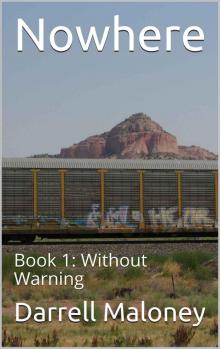 Without Warning
Without Warning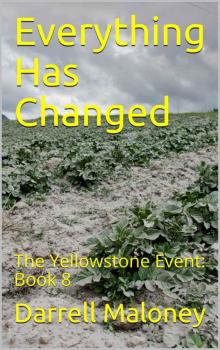 Everything Has Changed
Everything Has Changed Rest in Peace
Rest in Peace This Changes Everything
This Changes Everything The Final Chapter
The Final Chapter It Can't Be Her
It Can't Be Her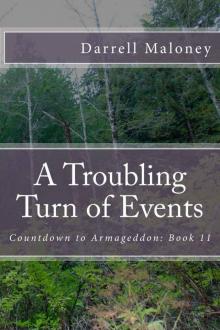 A Troubling Turn of Events
A Troubling Turn of Events The Blockade
The Blockade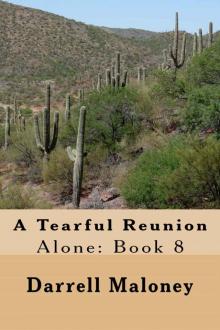 A Tearful Reunion
A Tearful Reunion Countdown to Armageddon
Countdown to Armageddon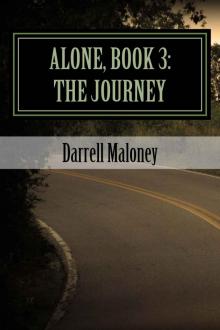 Alone, Book 3: The Journey
Alone, Book 3: The Journey The Army Comes Calling
The Army Comes Calling The Grim Reaper Comes Calling
The Grim Reaper Comes Calling Her Name is Beth: Alone: Book 5
Her Name is Beth: Alone: Book 5 Red: The Adventure Begins
Red: The Adventure Begins Rise From The Ashes: The Rebirth of San Antonio (Countdown to Armageddon Book 3)
Rise From The Ashes: The Rebirth of San Antonio (Countdown to Armageddon Book 3) An Unkind Winter (Alone Book 2)
An Unkind Winter (Alone Book 2) A Stunning Betrayal: Alone: Book 9
A Stunning Betrayal: Alone: Book 9 A Whole New World: Ranger: Book 2
A Whole New World: Ranger: Book 2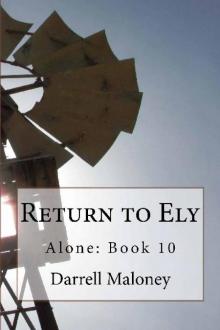 Return To Ely
Return To Ely A Lesson Learned: Red: Book 3
A Lesson Learned: Red: Book 3 The Homecoming: Countdown to Armageddon: Book 5
The Homecoming: Countdown to Armageddon: Book 5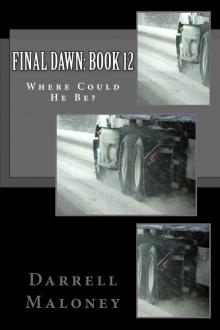 Final Dawn: Book 12: Where Could He Be?
Final Dawn: Book 12: Where Could He Be? An Acquired Taste
An Acquired Taste On Desert Sands: Alone: Book 6
On Desert Sands: Alone: Book 6 The Battle: Alone: Book 4
The Battle: Alone: Book 4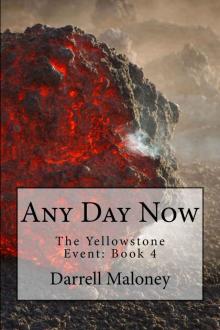 Any Day Now
Any Day Now Too Tough To Tame: Red: Book 2
Too Tough To Tame: Red: Book 2 No Help From Austin: Red: Book 5
No Help From Austin: Red: Book 5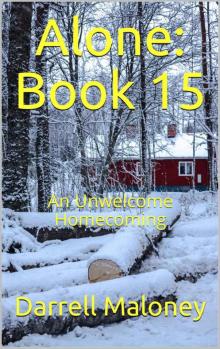 An Unwelcome Homecoming
An Unwelcome Homecoming A New Start: Final Dawn: Book 9 (Volume 9)
A New Start: Final Dawn: Book 9 (Volume 9) A Stunning Betrayal
A Stunning Betrayal An Undeclared War (Countdown to Armageddon Book 4)
An Undeclared War (Countdown to Armageddon Book 4) One of Our Own: Final Dawn: Book 11
One of Our Own: Final Dawn: Book 11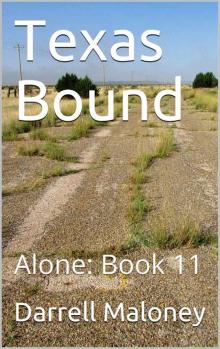 Texas Bound: Alone: Book 11
Texas Bound: Alone: Book 11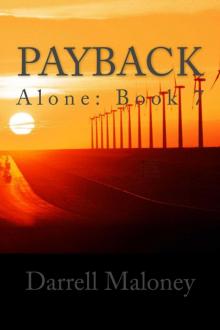 Payback: Alone: Book 7
Payback: Alone: Book 7 The Quest: Countdown to Armageddon: Book 6
The Quest: Countdown to Armageddon: Book 6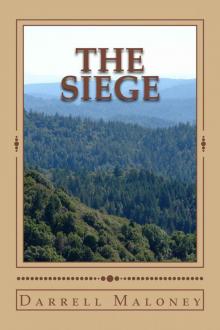 The Siege
The Siege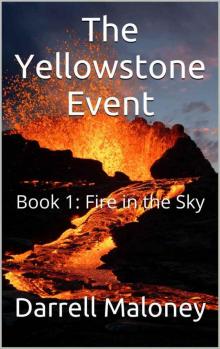 The Yellowstone Event: Book 1: Fire in the Sky
The Yellowstone Event: Book 1: Fire in the Sky Return to Blanco (Red Book 4)
Return to Blanco (Red Book 4) The Search
The Search AFTER THE DUST SETTLED (Countdown to Armageddon Book 2)
AFTER THE DUST SETTLED (Countdown to Armageddon Book 2) Death Comes Calling (Ranger Book 3)
Death Comes Calling (Ranger Book 3) A Long Road Back: Final Dawn: Book 8
A Long Road Back: Final Dawn: Book 8